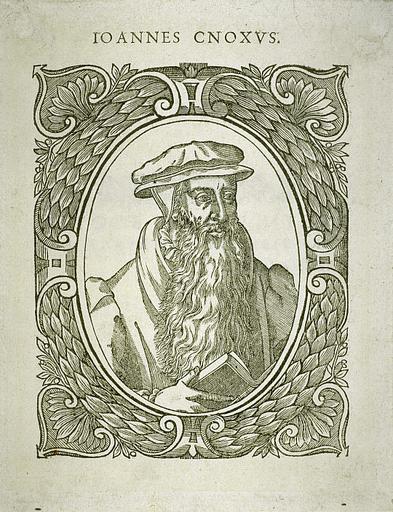MAKE A MEME
View Large Image

| View Original: | John_Knox.jpg (540x704) | |||
| Download: | Original | Medium | Small | Thumb |
| Courtesy of: | www.flickr.com | More Like This | ||
| Keywords: drawing indoor illustration monochrome sketch John Knox (c. 1510 – 24 November 1572) was a Scottish clergyman and leader of the Protestant Reformation who is considered the founder of the Presbyterian denomination. He was educated at the University of St Andrews and worked as a notary-priest. Influenced by early church reformers such as George Wishart, he joined the movement to reform the Scottish church. He was caught up in the ecclesiastical and political events that involved the murder of Cardinal Beaton in 1546 and the intervention of the regent of Scotland, Mary of Guise. He was taken prisoner by French forces the following year and exiled to England on his release in 1549. While in exile, Knox was licensed to work in the Church of England, where he quickly rose in the ranks to serve King Edward VI of England as a royal chaplain. In this position, he exerted a reforming influence on the text of the Book of Common Prayer. In England he met and married his first wife, Marjorie. When Mary Tudor ascended the throne and re-established Roman Catholicism, Knox was forced to resign his position and leave the country. Knox first moved to Geneva and then to Frankfurt. In Geneva, he met John Calvin, from whom he gained experience and knowledge of Reformed theology and Presbyterian polity. He created a new order of service, which was eventually adopted by the reformed church in Scotland. He left Geneva to head the English refugee church in Frankfurt but he was forced to leave over differences concerning the liturgy, thus ending his association with the Church of England. On his return to Scotland, he led the Protestant Reformation in Scotland, in partnership with the Scottish Protestant nobility. The movement may be seen as a revolution, since it led to the ousting of Mary of Guise, who governed the country in the name of her young daughter, Mary, Queen of Scots. Knox helped write the new confession of faith and the ecclesiastical order for the newly created reformed church, the Kirk. He continued to serve as the religious leader of the Protestants throughout Mary's reign. In several interviews with the queen, Knox admonished her for supporting Catholic practices. Eventually, when she was imprisoned and James VI enthroned in her stead, he openly called for her execution. He continued to preach until his final days. John Knox (c. 1510 – 24 November 1572) was a Scottish clergyman and leader of the Protestant Reformation who is considered the founder of the Presbyterian denomination. He was educated at the University of St Andrews and worked as a notary-priest. Influenced by early church reformers such as George Wishart, he joined the movement to reform the Scottish church. He was caught up in the ecclesiastical and political events that involved the murder of Cardinal Beaton in 1546 and the intervention of the regent of Scotland, Mary of Guise. He was taken prisoner by French forces the following year and exiled to England on his release in 1549. While in exile, Knox was licensed to work in the Church of England, where he quickly rose in the ranks to serve King Edward VI of England as a royal chaplain. In this position, he exerted a reforming influence on the text of the Book of Common Prayer. In England he met and married his first wife, Marjorie. When Mary Tudor ascended the throne and re-established Roman Catholicism, Knox was forced to resign his position and leave the country. Knox first moved to Geneva and then to Frankfurt. In Geneva, he met John Calvin, from whom he gained experience and knowledge of Reformed theology and Presbyterian polity. He created a new order of service, which was eventually adopted by the reformed church in Scotland. He left Geneva to head the English refugee church in Frankfurt but he was forced to leave over differences concerning the liturgy, thus ending his association with the Church of England. On his return to Scotland, he led the Protestant Reformation in Scotland, in partnership with the Scottish Protestant nobility. The movement may be seen as a revolution, since it led to the ousting of Mary of Guise, who governed the country in the name of her young daughter, Mary, Queen of Scots. Knox helped write the new confession of faith and the ecclesiastical order for the newly created reformed church, the Kirk. He continued to serve as the religious leader of the Protestants throughout Mary's reign. In several interviews with the queen, Knox admonished her for supporting Catholic practices. Eventually, when she was imprisoned and James VI enthroned in her stead, he openly called for her execution. He continued to preach until his final days. | ||||